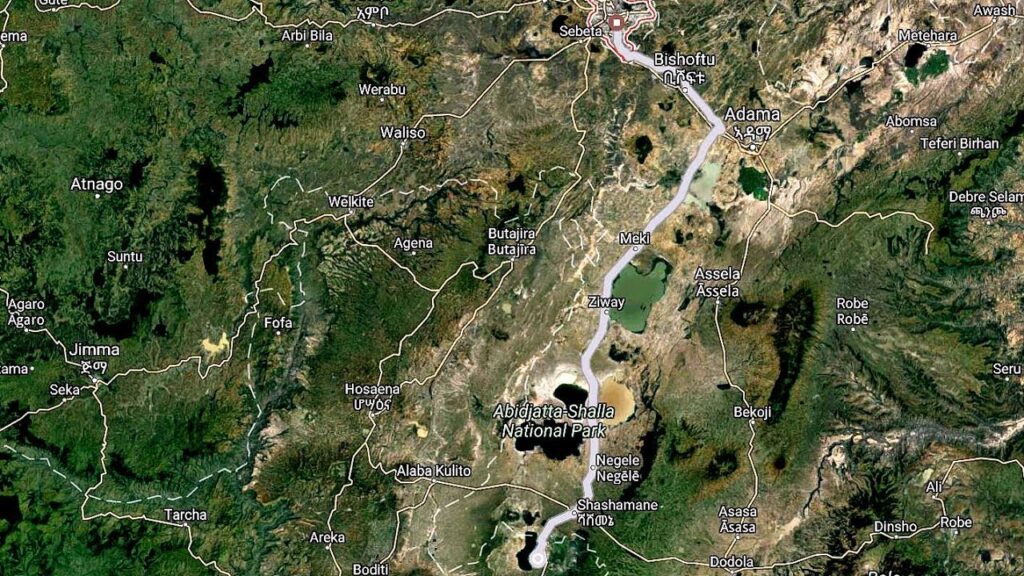Introduction
The Ethiopian Rift Valley is an awe-inspiring geological feature in the heart of East Africa. Located in the northern part of Ethiopia, this valley runs from the Red Sea all the way to Lake Turkana in Kenya.
The Ethiopian Rift Valley is one of the most geologically active regions in the world and is home to some of the most stunning landscapes in Africa. It is a region of incredible diversity, with vast mountain ranges, stunning lakes, and vast savannahs.
The area has been inhabited for thousands of years, and it is home to some of the oldest human remains ever found. In addition, the Ethiopian Rift Valley is home to many species of flora and fauna, as well as some of the most breathtaking scenery in the world.
History of the Ethiopian Rift Valley
The Ethiopian Rift Valley is believed to have formed around 25 million years ago. It was formed by the movement of the African and Arabian tectonic plates, which created a huge trough or rift.
Throughout its history, the Ethiopian Rift Valley has seen numerous human settlements and cultures. From the ancient Axumite kingdom to the modern-day Amhara and Oromo people, the region has been home to many different civilizations.
The region has also seen numerous wars and conflicts. In the 19th century, the area was the site of the Battle of Adwa, which saw the Ethiopians successfully defend against an Italian invasion.
Geography of the Ethiopian Rift Valley
The Ethiopian Rift Valley is known for its stunning landscapes and diverse geography. The region is home to a number of mountain ranges, including the Simien Mountains, which are some of the highest in Africa.
The region is also home to a number of lakes, including Lake Tana, the largest lake in the country, and Lake Abaya, the second-largest lake in Ethiopia. The region is also home to a number of rivers, including the Blue Nile, which is fed by Lake Tana.
In addition, the region is home to a number of different types of vegetation, including grasslands, savannas, and forests. The area is also home to a number of different species of animals, including lions, leopards, and African wild dogs.
Cultural Significance of the Ethiopian Rift Valley
The Ethiopian Rift Valley has a deep cultural significance in the country and beyond. It is home to some of the oldest human remains ever found, including the remains of Lucy, an ancient hominid species.
The region is also home to a number of ancient religious sites, including churches, mosques, and monasteries. The region is also home to some of the most important archaeological sites in Ethiopia, including the stelae of Axum.
In addition, the area is home to a number of important cultural sites, including the imperial palace of Gondar and the ancient city of Lalibela. These sites are important to the history and culture of Ethiopia and are visited by thousands of tourists every year.
Conclusion
The Ethiopian Rift Valley is a stunning region of incredible diversity and stunning landscapes. Home to some of the oldest human remains ever found, the area is steeped in history and culture.
From the Simien Mountains to Lake Tana, the region is home to a number of stunning sites and attractions. The area has also seen numerous wars and conflicts, and it is home to some of the most important archaeological sites in Ethiopia.
The Ethiopian Rift Valley is an awe-inspiring region that is well worth a visit. With its stunning landscapes, diverse flora The Ethiopian Rift Valley, nestled in the northern part of Ethiopia, stands as a testament to the earth’s geological wonders. Spanning from the Red Sea to Lake Turkana in Kenya, this region is characterized by its breathtaking landscapes, including vast mountain ranges, serene lakes, and expansive savannahs. With a history dating back millions of years, the Ethiopian Rift Valley has been home to ancient civilizations and witnessed significant events like the Battle of Adwa. Its diverse geography, encompassing towering peaks like the Simien Mountains and expansive bodies of water such as Lake Tana, hosts a rich array of flora and fauna, including iconic species like lions and leopards. Moreover, with its cultural significance evidenced by ancient religious sites and archaeological wonders like the stelae of Axum, the Ethiopian Rift Valley offers visitors an unparalleled journey through time and natural beauty, making it a must-visit destination for those seeking an extraordinary African experience.

